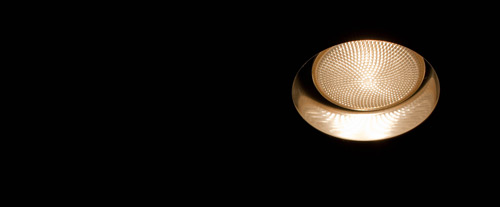
[All photos by BUILD LLC]
Lately, building departments all over the United States have been adopting more stringent energy codes. Which is great, we’re all about intentional design and creating a more sustainable built-environment. The City of Seattle recently approved the new Washington State Energy Code which includes an important requirement that affects most residential projects. Here’s an excerpt from Section 505.1 of the WSEC regarding interior lighting for single-family residential projects:
![]() …a minimum of 50 percent of all luminaries shall be high efficacy luminaries.
…a minimum of 50 percent of all luminaries shall be high efficacy luminaries.
What this means is that half of the lights in a new home now need to be fluorescent lights. This is a pretty significant change for one reason in particular: aesthetics. To us, the quality of light from a fluorescent bulb has never matched the quality of light from an incandescent or halogen bulb; and while that may not be a big deal in a garage, it’s a very big deal at the bathroom vanity, the kitchen and the living room. In the past, fluorescent bulbs have been known to produce a cold, blue-ish light uncomplimentary to skin tones, which look better under a warmer, redder light. Replace the lights in your living room with traditional fluorescent tubes and your once cozy lounge will look like a meat locker.
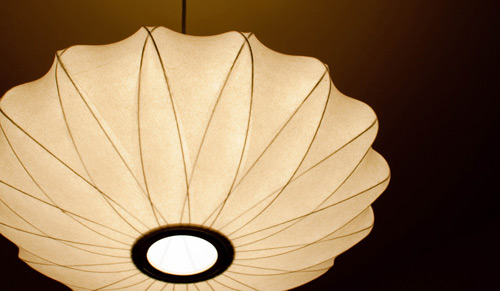
Without a doubt, fluorescent bulbs are far more energy efficient than incandescent or halogen bulbs; but our focus here is on the quality of light. Ever since architecture school, we’ve been hearing that fluorescent bulbs are available in warmer tones –intended to match the light quality of incandescent/halogen bulbs and thereby making fluorescent bulbs or CFLs (compact fluorescent lamps) a desirable substitute. We’re always reading claims about fluorescent bulbs matching or exceeding the quality of light produced by incandescent/halogen bulbs. Great! Sign us up! But here’s the dealio –for reasons that are unclear to us, we’ve never personally experienced any of these rival fluorescent bulbs. Having been in the architecture and construction business for decades now, this seems a bit odd to us. It may very well be our own fault; maybe we’ve failed to do our homework in this area, perhaps we haven’t seized the right opportunities in lighting design, or maybe we’ve been sustainably delinquent. Who knows, but we’re not going to let this go on another decade. So without further ado, we’re officially launching <drum roll please> THE FLUORESCENT LIGHTING CHALLENGE; AN INVITATION TO THE CFL SHOW-DOWN.
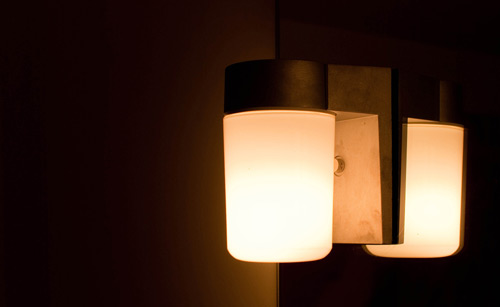
We’re inviting any and all lighting manufacturers, lighting suppliers, lighting reps, lighting designers, architects, lighting geeks and homeowners alike to submit their fluorescent bulbs directly to the BUILD LLC World Headquarters for a hands-on, comparative quality test. We’ll be replacing the incandescent bulbs in our own homes with the submitted fluorescent bulbs for a period of one week, at which point we’ll post the results. We’re not going to be analyzing the data or crunching the numbers, we already know that fluorescents kick some serious fanny in that department. This show-down is all about the quality and experience of light. The evaluation period may include (but not be limited to) the following questions:
Did we stop cooking at home because we’re tired of eating blue food?
Am I no longer attracted to my significant other?
Do we hang out in a meat locker each evening?
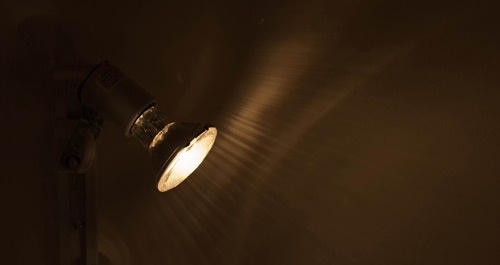
In all seriousness, any bulbs that meet, exceed, or even come close to the quality of our current incandescent and halogen bulbs will be promoted on the BUILDblog and we’ll give a nice healthy shout-out to the companies that produce them.
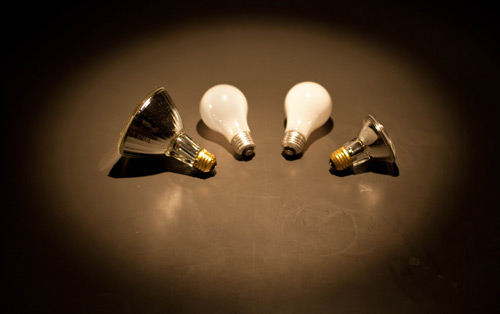
Here are the specifications for the (4) incandescent/halogen bulbs in question:
1. A 60W 120V Incandescent bulb in a Thomas SL875 wall sconce at the master bathroom.
2. A 100W 120V Incandescent bulb in a George Nelson Criss-Cross Saucer Ceiling Pendant at the dining room.
3. A PAR30 50W Halogen in a Lightolier ceiling mount recessed can light at the living room.
4. A PAR20 Halogen in a Juno T12W Trac-Master track light in the den.
There it is. Got a great fluorescent bulb? Send it on in to the address below and stay tuned. And cheers from team BUILD.
BUILD LLC
5611 University Way NE #100B
Seattle WA 98105





